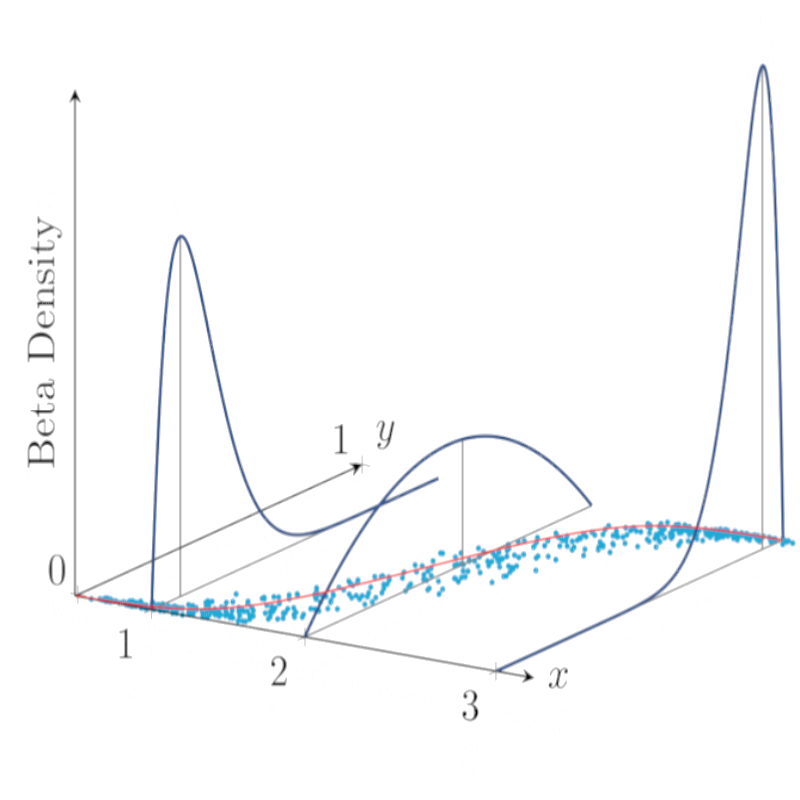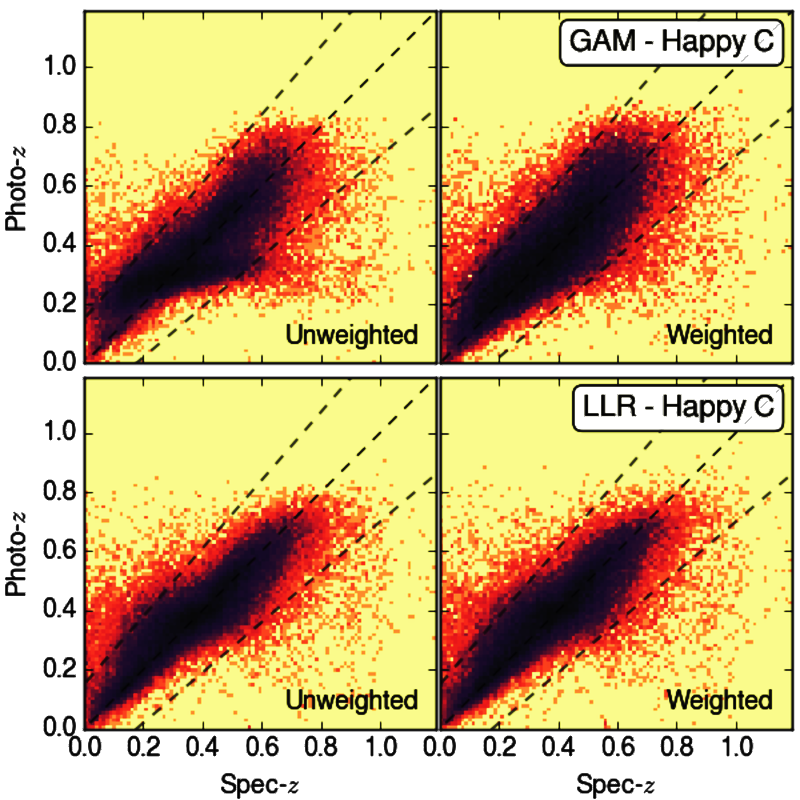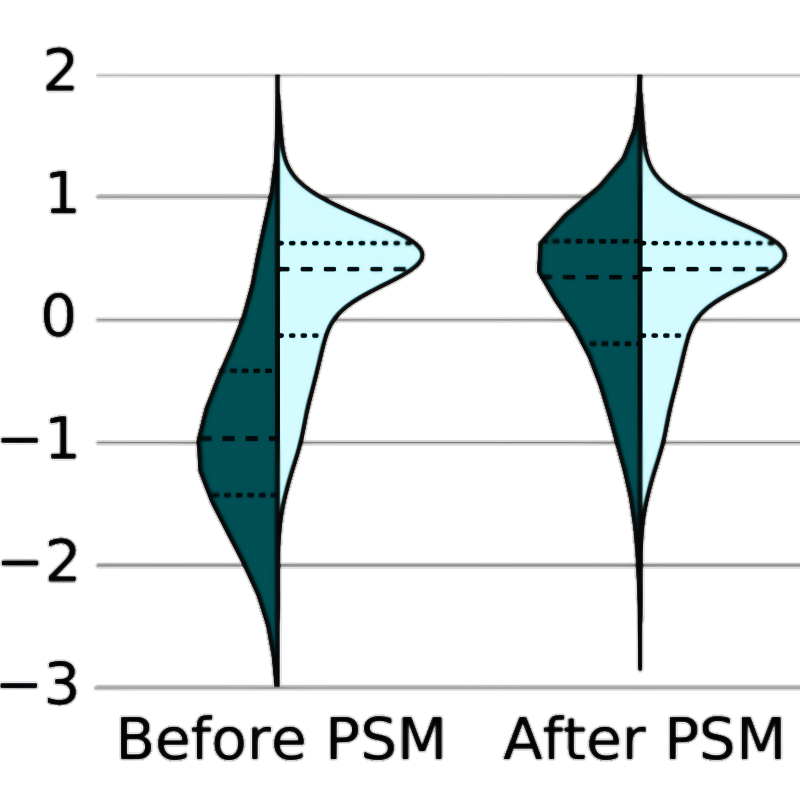Photometry of high-redshift blended galaxies using deep learning

This work explores the use of deep neural networks to estimate the photometry of blended pairs of galaxies in monochrome space images, similar to the ones that will be delivered by the Euclid space telescope. Using a clean sample of isolated galaxies from the CANDELS survey, we artificially blend them and train two different network models to recover the photometry of the two galaxies. We show that our approach can recover the original photometry of the galaxies before being blended with ~7% accuracy without any human intervention and without any assumption on the galaxy shape.
Dark energy equation of state imprint on supernova data

This work determines the degree to which a standard Lambda-CDM analysis based on type Ia supernovae can identify deviations from a cosmological constant in the form of a redshift-dependent dark energy equation of state w(z). We demonstrate that a standard type Ia supernova cosmology analysis has limited sensitivity to extensive redshift dependencies of the dark energy equation of state. In addition, we report that larger redshift-dependent departures from a cosmological constant do not necessarily manifest easier-detectable incompatibilities with the Lambda-CDM model.
Hurdle and Generalized Additive Models

We show that the baryonic fraction and the rate of ionizing photons appear to have a larger impact on fesc than previously thought. A naive univariate analysis of the same problem would suggest smaller effects for these properties and a much larger impact for the specific star formation rate, which is lessened after accounting for other galaxy properties and non-linearities in the statistical model.
Incompleteness of nearby cluster population

We report the discovery of 41 new stellar clusters. This represents an increment of at least 20% of the previously known OC population in this volume of the Milky Way. We also report on the clear identification of NGC 886, an object previously considered an asterism. This letter challenges the previous claim of a near-complete sample of open clusters up to 1.8 kpc. Our results reveal that this claim requires revision, and a complete census of nearby open clusters is yet to be found.
Active Learning for Supernova Photometric Classification

Active Learning is a class of algorithms that aims to minimize labeling costs by identifying a few, carefully chosen, objects which have high potential in improving a given machine learning classifier. In this project, we show how Active Learning can be used as a tool for optimizing the construction of spectroscopic samples for supernova photometric classification.
Integrated Nested Laplace Approximation

We introduce a novel technique to model IFS datasets, which treats the observed galaxy properties as manifestations of an unobserved Gaussian Markov random field. The method is computationally efficient, resilient to the presence of low-signal-to-noise regions, and uses an alternative to Markov Chain Monte Carlo for fast Bayesian inference – the Integrated Nested Laplace Approximation. The proposed Bayesian approach enables the creation of synthetic images, recovery of areas with bad pixels, and an increased power to detect structures in datasets subject to substantial noise and/or sparsity of sampling.
Gaussian Mixture Models

Here, we show how to use a Gaussian mixture model (GMM) to jointly analyse two traditional emission-line classification schemes of galaxy ionization sources: the Baldwin-Phillips-Terlevich (BPT) and the WHAN diagrams, using spectroscopic data from the Sloan Digital Sky Survey Data Release 7 and SEAGal/STARLIGHT datasets. We apply a GMM to empirically define classes of galaxies in a three-dimensional space spanned by the log [OIII]/H-beta, log [NII]/H-alpha, and log EW(H-alpha) optical parameters. We demonstrate the potential of our methodology to recover/unravel different objects inside the wilderness of astronomical datasets, without lacking the ability to convey physically interpretable results; hence being a precious tool for maximum exploitation of the ever-increasing astronomical surveys.
Representativeness in Machine Learning applications for photometric redshifts

We present two galaxy catalogues built to enable a more demanding and realistic test of photo-z methods. We demonstrate the potential of these catalogues by submitting them to the scrutiny of different photo-z methods, including machine learning (ML) and template fitting approaches. Our catalogues represent the first controlled environment allowing a straightforward implementation of such tests.
Hierarchical Bayesian Models

We developed a hierarchical Bayesian model to investigate how the presence of Seyfert activity relates to their environment. In elliptical galaxies, our analysis indicates a strong correlation of Seyfert-AGN activity with the cluster centric distance, and a weaker correlation with the mass of the host. In spiral galaxies these trends do not appear, suggesting that the link between Seyfert activity and the properties of spiral galaxies are independent of the environment.
Dimensionality Reduction And Clustering for Unsupervised Learning in Astronomy

DRACULA classifies objects using dimensionality reduction and clustering. The code has an easy interface and can be applied to separate several types of objects. It is based on tools developed in scikit-learn, with Deep Learning usage requiring also the H2O package. We show how it can be used to identify sub-classes of type Ia supernovae.
